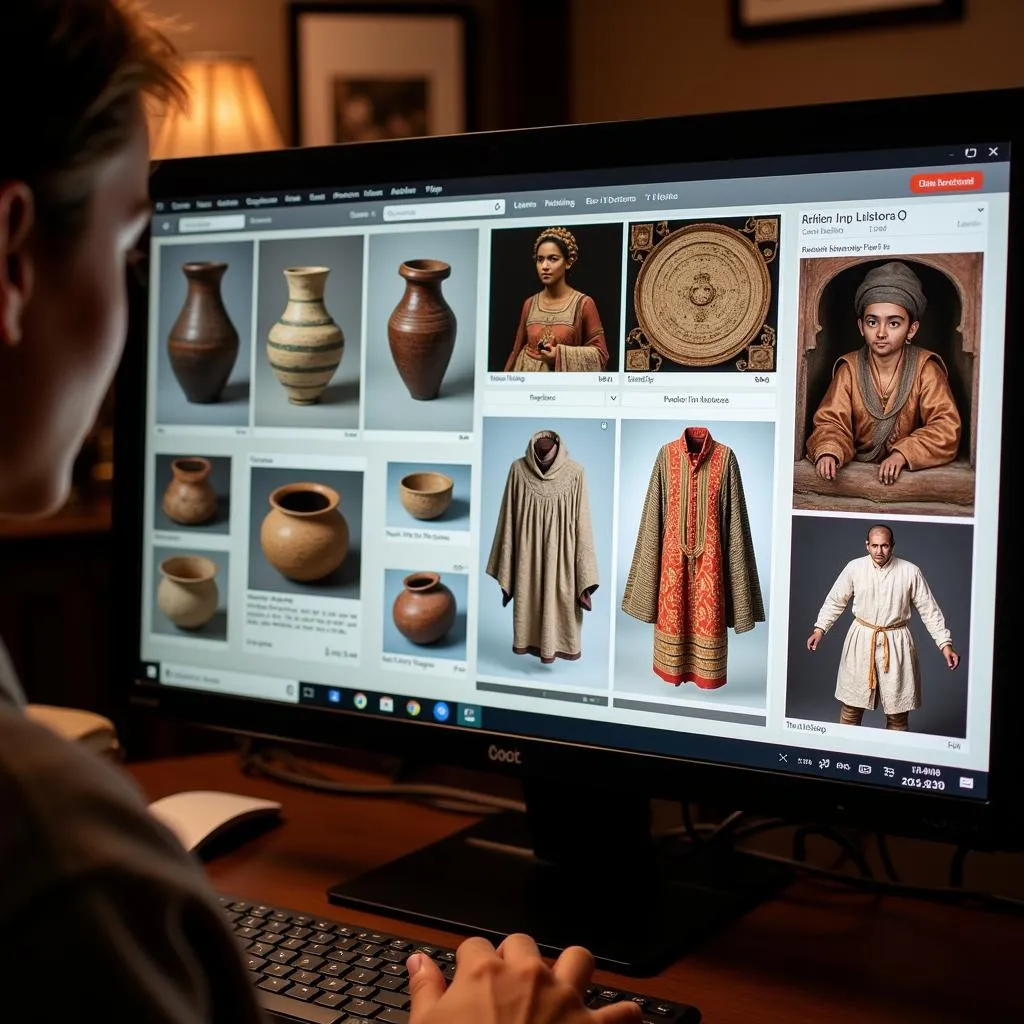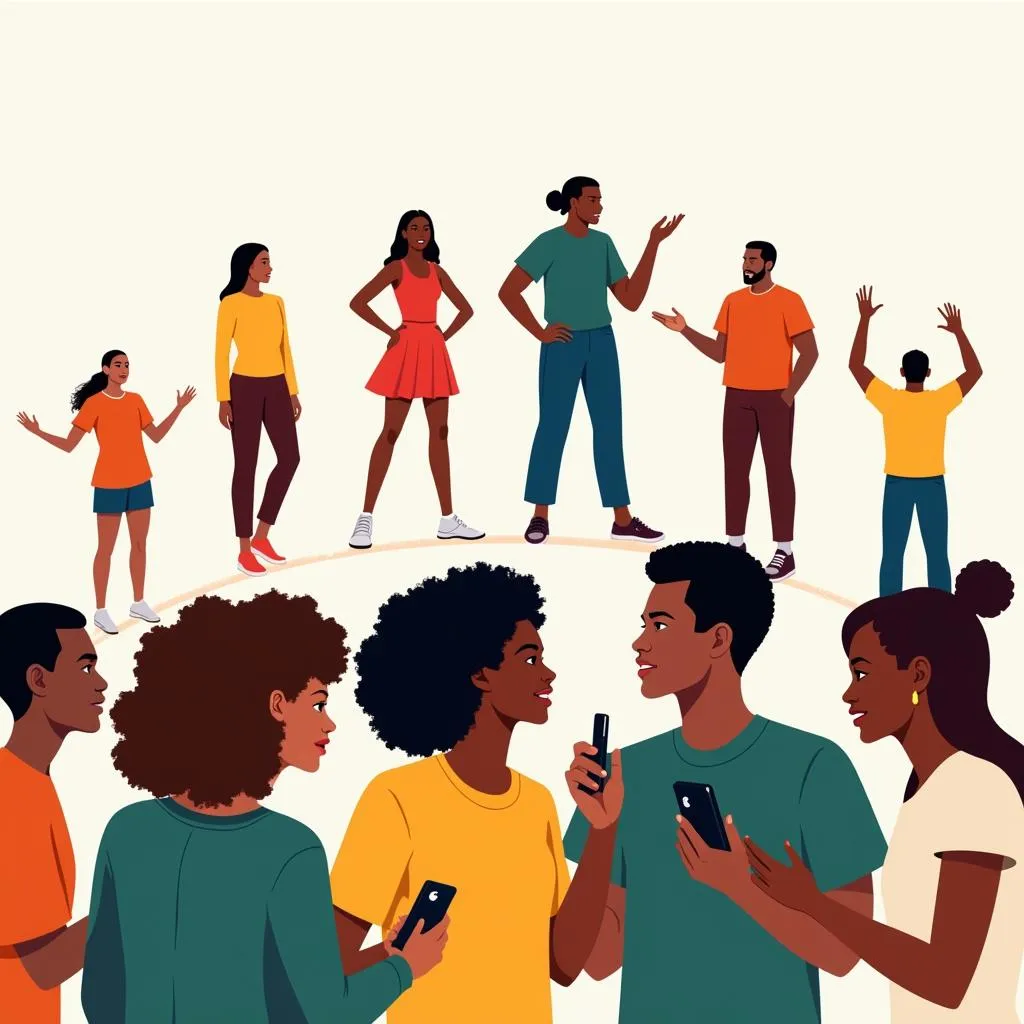The IELTS Reading test often includes passages on various cultural and educational topics. One such topic that has gained prominence in recent years is the role of virtual tours in cultural education. Let’s explore this subject through a sample IELTS Reading test, complete with passages and questions.
Nội dung bài viết
- Passage 1 – Easy Text
- The Rise of Virtual Tours in Museums
- Questions 1-5
- Questions 6-10
- Passage 2 – Medium Text
- The Impact of Virtual Tours on Cultural Understanding
- Questions 11-14
- Questions 15-20
- Passage 3 – Hard Text
- The Cognitive and Emotional Dimensions of Virtual Cultural Experiences
- Questions 21-26
- Questions 27-31
- Questions 32-35
- Answer Key
- Passage 1
- Passage 2
- Passage 3
Passage 1 – Easy Text
The Rise of Virtual Tours in Museums
In recent years, museums around the world have embraced digital technology to enhance visitor experiences and extend their reach beyond physical boundaries. Virtual tours have emerged as a powerful tool in this digital transformation, offering a novel way to explore cultural heritage and artworks from the comfort of one’s home. These online experiences have become particularly valuable in times of restricted travel or limited access to cultural institutions.
Virtual tours typically utilize high-resolution images, 360-degree panoramas, and interactive elements to create an immersive experience for users. Visitors can navigate through exhibition halls, zoom in on artifacts, and access detailed information about each piece. Some advanced virtual tours even incorporate augmented reality features, allowing users to visualize artworks in their own spaces or experience historical reconstructions of ancient sites.
The benefits of virtual tours extend beyond mere convenience. They provide accessibility for individuals who may face physical or geographical barriers to visiting museums in person. Additionally, virtual tours offer educational institutions a valuable resource for enhancing classroom learning, allowing students to explore cultural sites and historical artifacts in a more engaging and interactive manner.
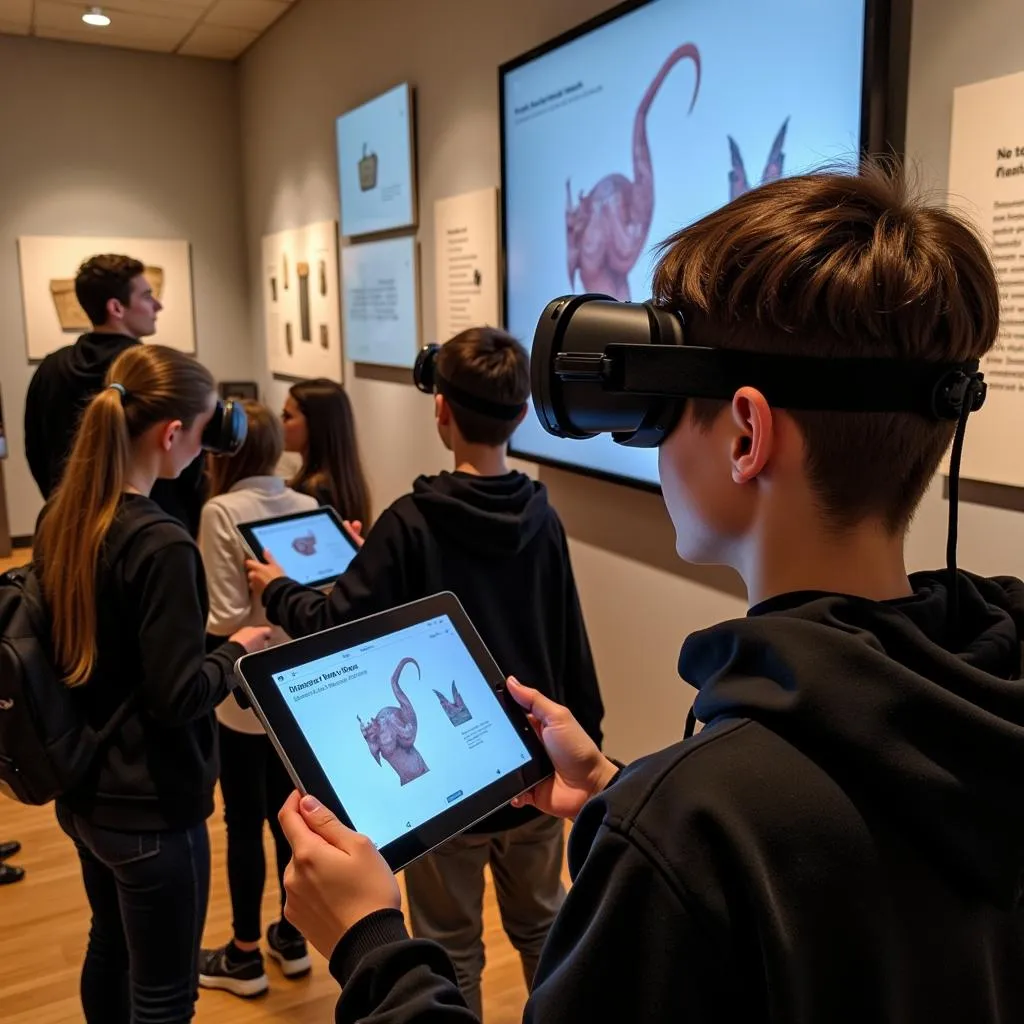 Virtual tours enhancing cultural education
Virtual tours enhancing cultural education
While virtual tours cannot fully replicate the experience of visiting a museum in person, they serve as a complementary tool that can enhance cultural education and spark interest in art and history. As technology continues to evolve, we can expect virtual tours to become even more sophisticated, offering increasingly realistic and interactive experiences for cultural exploration.
Questions 1-5
Do the following statements agree with the information given in the passage? Write
TRUE if the statement agrees with the information
FALSE if the statement contradicts the information
NOT GIVEN if there is no information on this
- Virtual tours are exclusively used by large, well-funded museums.
- High-resolution images and 360-degree panoramas are common features of virtual tours.
- Augmented reality features allow users to place museum artifacts in their own homes virtually.
- Virtual tours have made museums more accessible to people with physical disabilities.
- Most schools now use virtual tours as a replacement for physical field trips to museums.
Questions 6-10
Complete the sentences below. Choose NO MORE THAN THREE WORDS from the passage for each answer.
- Virtual tours have become especially useful during times of __ or when access to cultural institutions is limited.
- Some advanced virtual tours incorporate __ features for a more interactive experience.
- Virtual tours provide a valuable resource for __ to enhance classroom learning.
- While virtual tours cannot fully replicate __, they serve as a complementary tool for cultural education.
- As technology advances, virtual tours are expected to offer increasingly __ experiences for cultural exploration.
Passage 2 – Medium Text
The Impact of Virtual Tours on Cultural Understanding
The advent of virtual tours has revolutionized the way we interact with cultural heritage sites and museums, prompting a significant shift in how cultural education is approached globally. This digital transformation has far-reaching implications for cross-cultural understanding, preservation of historical knowledge, and the democratization of access to cultural resources.
One of the most profound impacts of virtual tours is their ability to transcend geographical boundaries. Cultural centers and heritage sites that were once accessible only to those who could physically visit them are now open to a global audience. This unprecedented access has the potential to foster greater intercultural dialogue and understanding. For instance, a student in rural India can now explore the Louvre in Paris or the Metropolitan Museum of Art in New York, gaining insights into Western art and history that were previously unattainable.
Moreover, virtual tours play a crucial role in preserving and disseminating knowledge about endangered or inaccessible cultural sites. In regions affected by conflict or natural disasters, virtual documentation of historical sites and artifacts serves as a digital safeguard against potential loss or destruction. The virtual reconstruction of Syria’s Palmyra, for example, allows people worldwide to experience this UNESCO World Heritage site, which has suffered significant damage during armed conflicts.
The educational potential of virtual tours extends beyond mere observation. Advanced virtual reality (VR) and augmented reality (AR) technologies are enabling more interactive and immersive learning experiences. Students can now participate in virtual reenactments of historical events, manipulate 3D models of ancient artifacts, or engage in guided virtual explorations led by expert curators. This level of engagement fosters a deeper connection with cultural content and can significantly enhance retention and understanding.
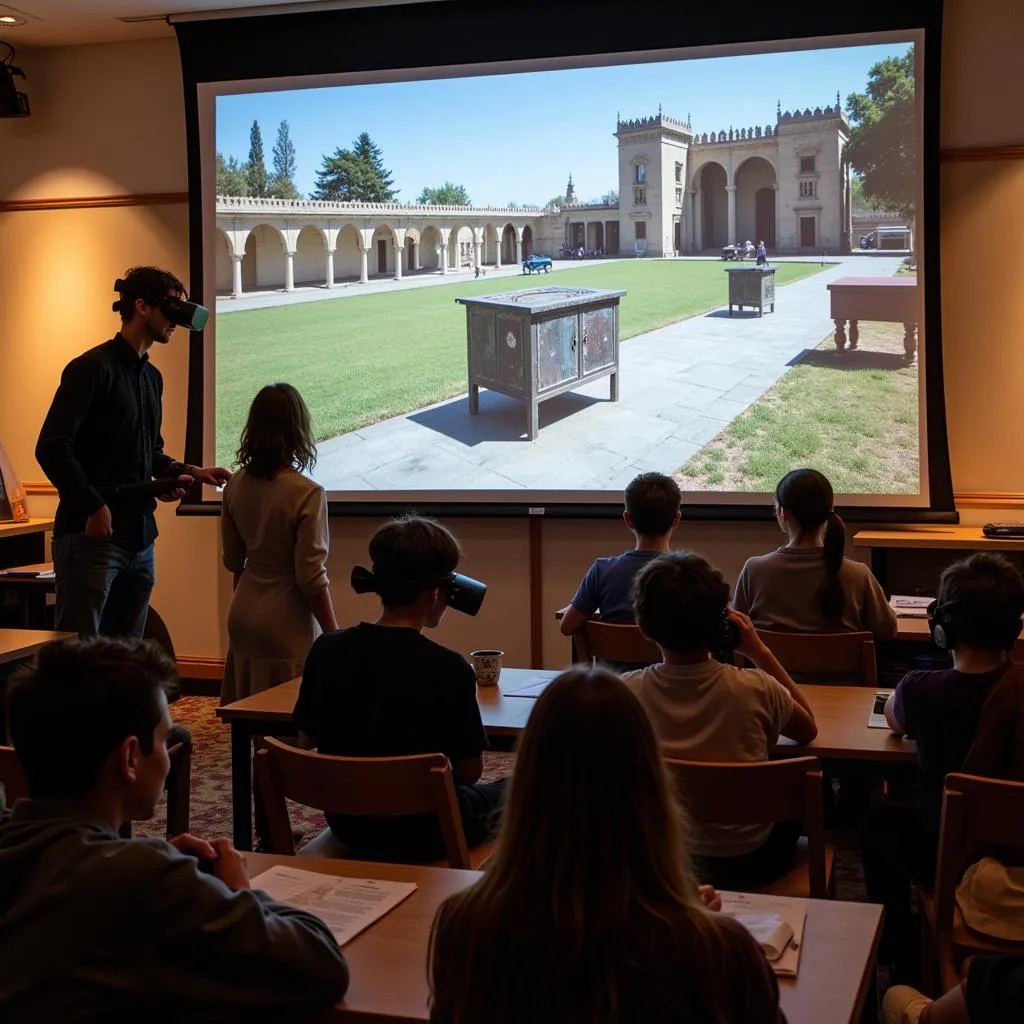 Students engaging in virtual cultural exploration
Students engaging in virtual cultural exploration
However, the rise of virtual tours also presents challenges. There is an ongoing debate about whether virtual experiences can truly replicate the emotional and sensory impact of physical visits to cultural sites. Critics argue that the nuances of scale, atmosphere, and context may be lost in digital translations. Additionally, there are concerns about the potential for virtual tours to reduce actual visits to cultural institutions, potentially impacting their funding and preservation efforts.
Despite these challenges, the potential of virtual tours to democratize access to cultural education is undeniable. They offer a solution to longstanding issues of accessibility, allowing people with physical disabilities, limited financial means, or those living in remote areas to engage with cultural heritage in meaningful ways. This inclusivity is reshaping the landscape of cultural education, making it more diverse and representative of global perspectives.
Furthermore, virtual tours are proving to be valuable tools in addressing cultural stereotypes in education. By providing direct access to authentic cultural content and perspectives, they can help dispel misconceptions and promote a more nuanced understanding of different cultures and historical contexts. This aspect is particularly crucial in an increasingly interconnected world where cross-cultural competence is becoming ever more important.
As technology continues to evolve, the role of virtual tours in cultural education is likely to expand further. The integration of artificial intelligence and machine learning may lead to more personalized and adaptive virtual experiences, tailoring content to individual learning styles and interests. This customization has the potential to make cultural education more engaging and effective for a diverse range of learners.
In conclusion, while virtual tours cannot entirely replace the experience of physical visits to cultural sites, they represent a significant leap forward in making cultural education more accessible, interactive, and globally inclusive. As these technologies continue to develop, their impact on cultural understanding and preservation is bound to grow, reshaping how we learn about and engage with the rich tapestry of human heritage.
Questions 11-14
Choose the correct letter, A, B, C, or D.
-
According to the passage, one of the main advantages of virtual tours is:
A) They are more entertaining than physical visits
B) They allow access to cultural sites regardless of geographical location
C) They completely replace the need for physical museums
D) They are cheaper to maintain than physical museums -
The virtual reconstruction of Palmyra is mentioned as an example of:
A) How virtual tours can preserve endangered cultural sites
B) The superiority of virtual experiences over physical visits
C) The limitations of virtual reality technology
D) The high cost of creating virtual tours -
The passage suggests that advanced VR and AR technologies in virtual tours:
A) Are too complicated for most users
B) Can provide more interactive and immersive learning experiences
C) Are only suitable for university-level education
D) Have largely failed to improve educational outcomes -
According to the text, a challenge faced by virtual tours is:
A) The high cost of implementation
B) Lack of interest from educational institutions
C) Difficulty in replicating the full sensory experience of physical visits
D) Inability to provide accurate historical information
Questions 15-20
Complete the summary below. Choose NO MORE THAN TWO WORDS from the passage for each answer.
Virtual tours have revolutionized cultural education by providing (15) __ access to cultural sites worldwide. They play a crucial role in preserving knowledge about (16) __ or inaccessible cultural sites. Advanced technologies enable students to participate in virtual (17) __ of historical events and interact with 3D models of artifacts. While there are concerns about virtual tours fully replicating the (18) __ of physical visits, they offer solutions to issues of accessibility. Virtual tours also help in addressing (19) __ in education by providing authentic cultural content. As technology evolves, the integration of (20) __ may lead to more personalized virtual experiences in cultural education.
Passage 3 – Hard Text
The Cognitive and Emotional Dimensions of Virtual Cultural Experiences
The integration of virtual tours into cultural education has sparked a multifaceted discourse among cognitive scientists, educators, and cultural anthropologists. This digital revolution in experiential learning presents both unprecedented opportunities and complex challenges in the realm of cognitive development and emotional engagement with cultural heritage.
From a cognitive perspective, virtual tours offer a unique platform for multimodal learning. The combination of visual, auditory, and sometimes kinesthetic inputs in these digital environments can potentially enhance information processing and memory consolidation. Neuroscientific research suggests that such multisensory experiences activate multiple brain regions simultaneously, potentially leading to more robust neural connections and improved retention of cultural knowledge. However, the efficacy of these digital experiences in comparison to physical, in-situ learning remains a subject of ongoing scientific inquiry.
One of the most intriguing aspects of virtual cultural tours is their potential to facilitate what cognitive psychologists term “embodied cognition.” This concept posits that cognitive processes are deeply rooted in the body’s interactions with the world. In the context of virtual tours, technologies like haptic feedback and motion-sensing controls allow users to interact with digital representations of artifacts or environments in ways that mimic physical interactions. This embodied approach to digital cultural exploration may bridge the gap between abstract knowledge and concrete experience, potentially enhancing understanding and retention of cultural concepts.
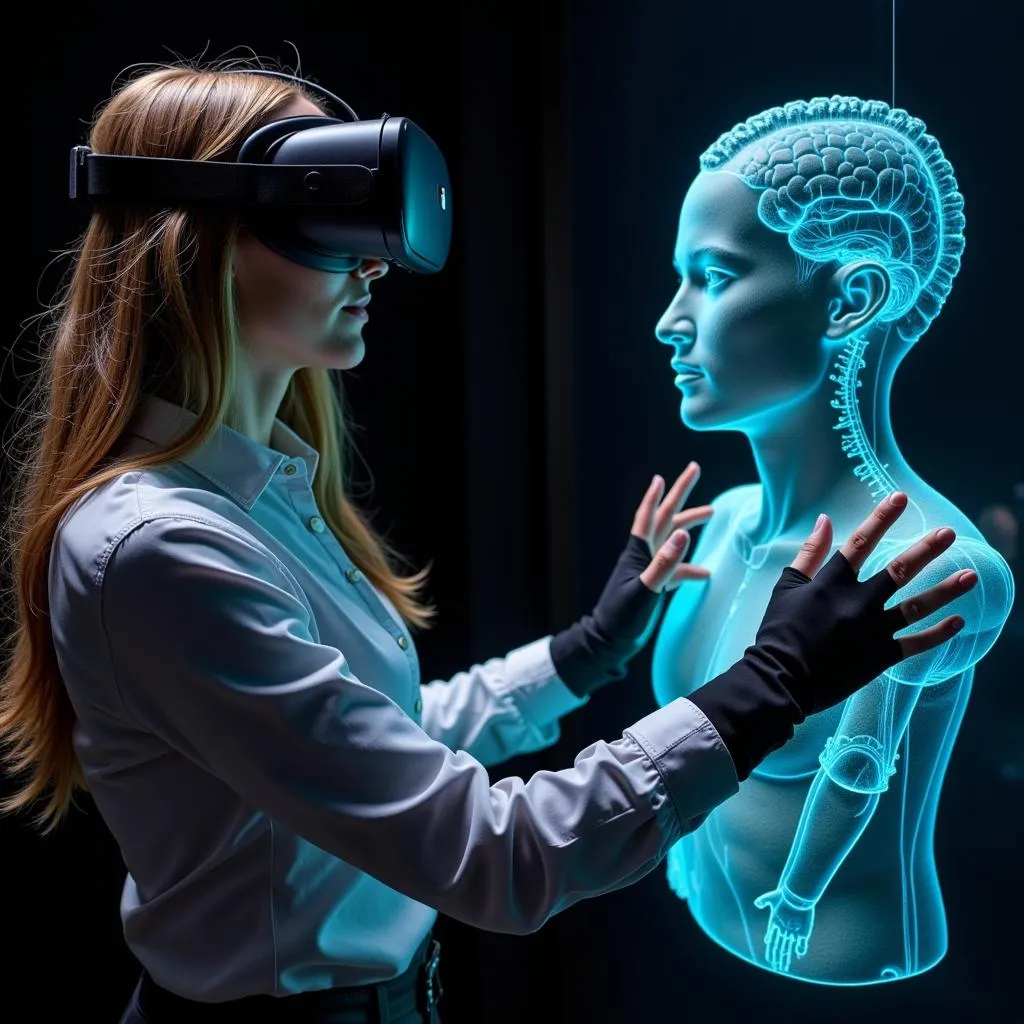 Embodied cognition in virtual cultural tours
Embodied cognition in virtual cultural tours
The emotional dimension of virtual cultural experiences presents another layer of complexity. The concept of “presence” – the subjective feeling of being in a virtual environment – plays a crucial role in the emotional engagement with digital cultural content. High levels of presence can elicit genuine emotional responses to virtual stimuli, potentially fostering a deeper connection with cultural heritage. However, critics argue that the mediated nature of virtual experiences may inhibit the formation of authentic emotional connections that arise from physical presence in culturally significant spaces.
The phenomenon of “digital empathy” has emerged as a significant area of study in the context of virtual cultural tours. Researchers are investigating how immersive digital experiences can cultivate empathy and cross-cultural understanding. For instance, virtual reconstructions of historical events or environments may allow users to experience perspectives and contexts vastly different from their own, potentially fostering greater cultural sensitivity and reducing ethnocentric biases.
However, the virtualization of cultural experiences also raises critical questions about the nature of authenticity in cultural education. The concept of “aura,” as proposed by cultural theorist Walter Benjamin, suggests that original artworks and artifacts possess a unique presence in time and space that cannot be fully replicated digitally. This tension between digital accessibility and the irreproducible qualities of physical cultural artifacts remains a central debate in the field of virtual heritage studies.
Moreover, the cognitive load associated with navigating complex virtual environments may, in some cases, detract from the learning experience. Users must simultaneously process the content of the virtual tour while managing the technical aspects of the digital interface, potentially leading to cognitive overload. This challenge underscores the importance of user-centered design in virtual cultural experiences to ensure that the technology enhances rather than hinders the learning process.
The potential of virtual tours to democratize access to cultural education also introduces new considerations in cognitive and social development. By providing equitable access to cultural resources, virtual tours may help bridge educational disparities and foster a more inclusive global cultural discourse. However, this democratization also necessitates careful curation and contextualization of cultural content to ensure accurate representation and interpretation across diverse cultural perspectives.
As digital exhibits in museum education become more prevalent, researchers are also exploring the long-term cognitive effects of increased reliance on virtual cultural experiences. Questions arise about how prolonged engagement with digital representations of culture might shape cognitive schemas and cultural perceptions, particularly among younger generations who may have limited exposure to physical cultural sites.
The intersection of virtual reality and cultural education also opens new avenues for studying cultural cognition and perception. For instance, researchers can manipulate virtual environments to investigate how subtle changes in context or presentation affect the interpretation and retention of cultural information. This level of experimental control, unattainable in physical settings, offers unprecedented opportunities for understanding the cognitive processes underlying cultural learning and appreciation.
In conclusion, the cognitive and emotional dimensions of virtual cultural experiences represent a rich and complex field of study. As technology continues to evolve, interdisciplinary collaboration between cognitive scientists, educators, technologists, and cultural heritage experts will be crucial in harnessing the full potential of virtual tours for cultural education. The ongoing dialogue between the virtual and the physical in cultural experiences will undoubtedly shape the future landscape of global cultural understanding and preservation.
Questions 21-26
Complete the summary below. Choose NO MORE THAN TWO WORDS from the passage for each answer.
Virtual tours in cultural education offer a platform for (21) __ learning, activating multiple brain regions simultaneously. The concept of (22) __ suggests that cognitive processes are deeply connected to bodily interactions with the world. Technologies like haptic feedback in virtual tours may enhance this type of cognition. The feeling of (23) __ in a virtual environment is crucial for emotional engagement with digital content. Researchers are studying how virtual experiences can cultivate (24) __ and cross-cultural understanding. However, the concept of (25) __ proposed by Walter Benjamin suggests that original artifacts possess unique qualities that cannot be fully replicated digitally. The (26) __ associated with navigating complex virtual environments may sometimes detract from the learning experience.
Questions 27-31
Do the following statements agree with the claims of the writer in the passage? Write
YES if the statement agrees with the claims of the writer
NO if the statement contradicts the claims of the writer
NOT GIVEN if it is impossible to say what the writer thinks about this
- Virtual tours are proven to be more effective for learning than physical visits to cultural sites.
- The concept of embodied cognition suggests that physical interactions enhance understanding of cultural concepts.
- Digital empathy cultivated through virtual tours always leads to reduced ethnocentric biases.
- The democratization of access to cultural resources through virtual tours may help reduce educational disparities.
- Long-term reliance on virtual cultural experiences might influence how younger generations perceive and understand culture.
Questions 32-35
Choose the correct letter, A, B, C, or D.
-
According to the passage, one advantage of virtual environments for researchers is:
A) They are less expensive to create than physical exhibits
B) They allow for greater experimental control in studying cultural cognition
C) They completely eliminate cultural biases in education
D) They can replace the need for physical cultural sites -
The passage suggests that the main challenge of cognitive load in virtual tours is:
A) The high cost of developing user-friendly interfaces
B) The difficulty of creating realistic virtual environments
C) The need to process both content and technical aspects simultaneously
D) The lack of emotional engagement in virtual experiences -
The author’s stance on the future of virtual tours in cultural education can best be described as:
A) Highly skeptical
B) Cautiously optimistic
C) Entirely dismissive
D) Unequivocally enthusiastic -
The passage implies that the most effective approach to developing virtual cultural experiences would involve:
A) Focusing solely on technological advancements
B) Replacing all physical cultural sites with virtual alternatives
C) Ignoring emotional aspects of cultural experiences
D) Collaboration between various fields of expertise
Answer Key
Passage 1
- NOT GIVEN
- TRUE
- TRUE
- TRUE
- NOT GIVEN
- restricted travel
- augmented reality
- educational institutions
- visiting a museum in person
- realistic and interactive
Passage 2
- B
- A
- B
- C
- unprecedented
- endangered
- reenactments
- emotional and sensory impact
- cultural stereotypes
- artificial intelligence
Passage 3
- multimodal
- embodied cognition
- presence
- digital empathy
- aura
- cognitive load
- NOT GIVEN
- YES
- NO
- YES
- YES
- B
- C
- B
- D
This comprehensive IELTS Reading practice test focuses on the role of virtual tours in cultural education, providing a thorough examination of the topic across varying levels of difficulty. By engaging with these passages and questions, test-takers can enhance their reading comprehension skills while gaining insights into this fascinating intersection of technology and cultural learning.
